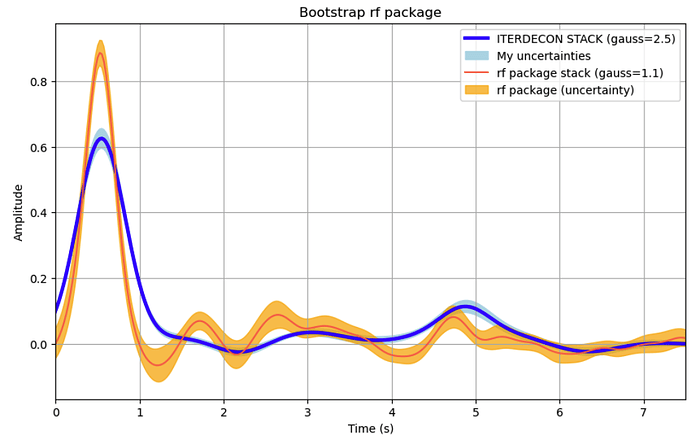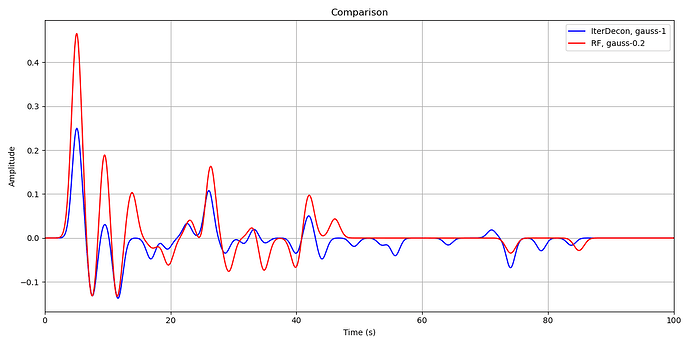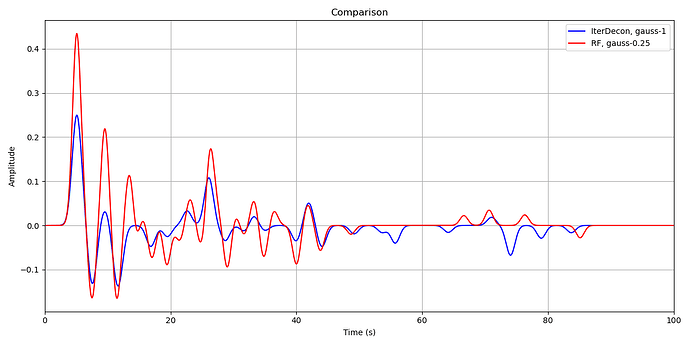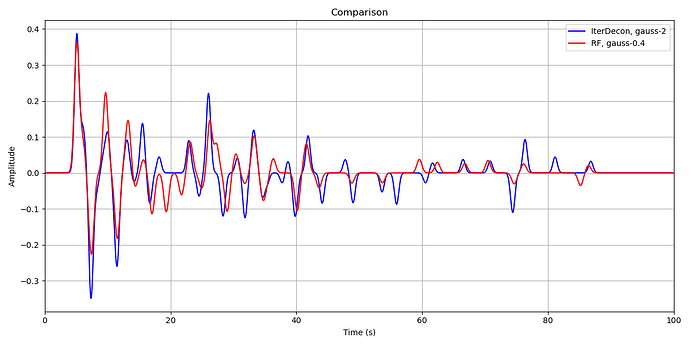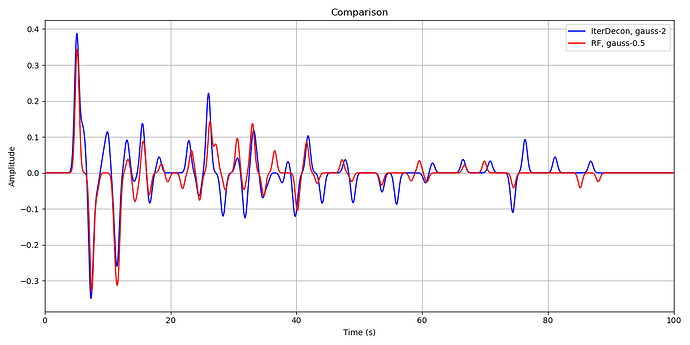Hi!
Thanks for the relevant question!
I remember I looked that up before. I had to look it up again 
Edit: The correct factor is 0.22, the answer below.
Short answer: The parameters are related like gauss_rf = 0.45 * gauss_id
Long answer:
The wiggles of the orange curve (rf) appear to have a longer period than the blue wiggles (id, iterdecon).
In the rf package the gauss parameter is defined as
gauss – Gauss parameter (standard deviation) of the Gaussian Low-pass filter, corresponds to cut-off frequency in Hz for a response value of exp(-0.5)=0.607.
You chose 0.5 for rf’s gauss, that is a 0.5 Hz lowpass → periods will be ~2s or larger → “rf peaks” will be >2s apart, which is what you observe in your plot (fist peak at 0.5s, 2nd at >2.5s).
Looking at the code, the definition of the filter response in frequency domain is
exp(-0.5 * (f/gauss_rf) ** 2)
I do not know the definition of the gauss parameter in iterdecon, but looking at the code of iterdeconvd.f, lines 518-566 the Gaussian filter response should be
exp(-pi**2 * (f/gauss_id) ** 2)
Therefore: gauss_rf = sqrt(2) / pi * gauss_id = 0.45 * gauss_id
gauss_id 2.5 would be equal to gauss_rf of 1.1. And indeed, higher frequencies are still present for the iterdecon curve, there is a small peak at ~1.5s in the blue curve.

